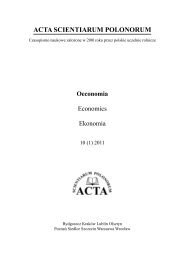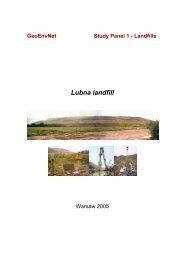INFORMATION SYSTEMS IN MANAGEMENT IV
INFORMATION SYSTEMS IN MANAGEMENT IV
INFORMATION SYSTEMS IN MANAGEMENT IV
Create successful ePaper yourself
Turn your PDF publications into a flip-book with our unique Google optimized e-Paper software.
panies. Due to the conditions that companies today meet on the market, a processoriented view has influence in the way they organize and conduct their business.Mapping a supply chain is the actual process that requires focus, not result.The key is to track one order, one product, or one person through the process withthe respect to time. A map is a mirror of what takes place during a given time periodand during this time period the actual time that it is observed is recorded. Bymapping the process, key operations are still visible, but the subprocesses that oftenconsume time and generate the greatest inefficiencies are revealed at the sametime. This causes solutions to problems to be generated and thus the supply chain isimproved [6 p.122].Create task weakness: Before the mapping process, the supply chain processes thatcross all functions of the organization need to be identified. This stresses the importanceof the key functions to be represented.Select the process to map: To make the mapping process feasible, identify the coreprocesses within the organization and the time they take before deciding on thepriorities for detailed mapping. When selecting the process, make sure that there isa generic customer or group of customers that the process serves.Collect data: The most effective way to collect data is simply to follow the itemthrough the process, also referred to as walking the process. An actual componentor order will be followed through all stages that are included in the process. It isimportant to identify those individuals who are actively involved in the process andreally knows what is happening. Each movement of the item should be describedwith respect to time [6 p.123].Distinguish between value-adding and non-value-adding time: Value-adding timeis time when something takes place on the item that the end customer is willing topay for. It is important that the definition of value-adding takes place within theorganization and the definition should be associated with the overall business strategy.When there is an understanding of the value-adding criteria at the strategiclevel, these criteria can be translated into value-adding criteria at an operationallevel. There are three criteria that are characterized for value-adding time:• if the process or elements physically change the nature of consumable item;• if a change to the consumable item produces something that the customer valuesor cares about and also is willing to pay for;• if the process is right the first time, and will not have to be prepared in order toproduce the desired result, that is valued by the customer.• The non-value adding activity can be split into four categories: delay, transport,storage and inspection.Construct the time-based process map: The overall purpose of the time-based processmap is to represent the data that is collected clearly and concisely. By doingthis the critical aspects of the supply network can be communicated in an easilyaccessible way. If the process can be represented on a single piece of paper the37
















